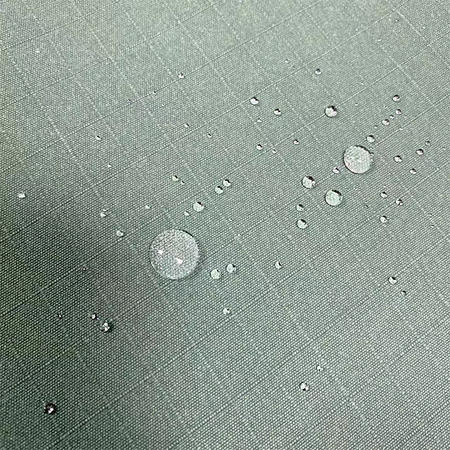TC tent fabric (a blend of terylene or polyester and cotton) balances breathability and moisture-wicking properties through a combination of the characteristics of both materials. Here’s how the fabric achieves this balance:
Cotton’s Breathability
Cotton is a natural fiber known for its excellent breathability. It allows air to pass through the fabric easily, which helps regulate temperature inside the tent. This natural ventilation is essential for maintaining comfort, especially in warm or humid environments where air circulation is necessary to reduce heat buildup.
The breathability of cotton helps prevent condensation inside the tent, allowing moisture from the air to escape, which keeps the interior dry and comfortable.
Polyester’s Moisture Resistance
Polyester (Terylene), on the other hand, is a synthetic fiber that has low moisture absorbency. It does not soak up water like cotton, making it naturally resistant to moisture. Instead, it helps to wick away moisture from the surface of the fabric, allowing water to evaporate rather than be absorbed.
While polyester is not as breathable as cotton, it complements cotton’s properties by ensuring that moisture doesn’t linger on the surface, which can cause discomfort or lead to mold growth.
Moisture-Wicking Mechanism
In TC fabric, the blend of polyester with cotton improves the fabric’s ability to wick moisture. When sweat or condensation occurs, the polyester component pulls moisture away from the skin or the inside of the tent and toward the outer surface of the fabric, where it can evaporate more quickly.
This wicking action helps keep the interior of the tent dry and reduces the feeling of dampness, which can occur when using pure cotton, as cotton tends to retain moisture and take longer to dry.

Blended Properties for Optimal Performance
The balance of breathability and moisture-wicking properties in TC tent fabric comes from the optimal mix of both fibers. Cotton allows for good air circulation, making the tent more comfortable by letting heat escape, while polyester helps manage moisture, ensuring that the fabric dries faster and remains less susceptible to water retention.
This combination results in a fabric that can handle a wider range of environmental conditions—providing ventilation in hot weather and resisting moisture in humid or rainy conditions.
Evaporation and Comfort
The polyester in TC fabric enables quick evaporation of moisture, while cotton adds to the comfort by providing a soft, breathable texture. This balance is important for maintaining comfort inside the tent, as it helps reduce the clammy feeling often associated with non-breathable synthetic materials, while also preventing the tent from becoming heavy or soaked during rainy conditions.
Practical Application
In real-world applications, TC fabric’s ability to both breathe and wick moisture makes it an excellent choice for camping tents where conditions can vary. Whether in hot, dry environments or humid, rainy ones, the fabric adapts by providing air circulation and moisture control, ensuring that the tent remains comfortable and dry.
TC tent fabric balances breathability and moisture-wicking properties by leveraging cotton’s natural airflow and polyester’s moisture management. Cotton ensures the fabric allows air to pass through, while polyester enhances its ability to wick moisture away from the surface and evaporate quickly. This combination provides a well-rounded fabric suitable for a variety of outdoor conditions, offering comfort and protection against both heat and moisture.















